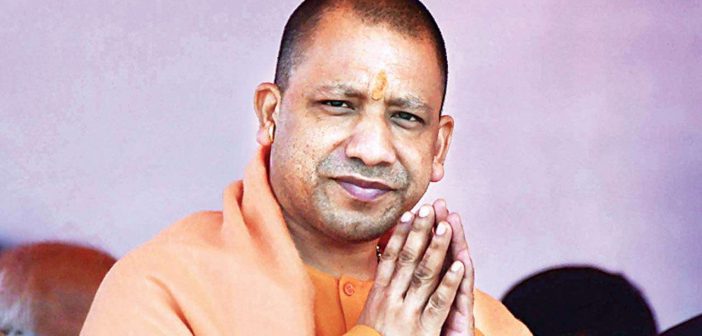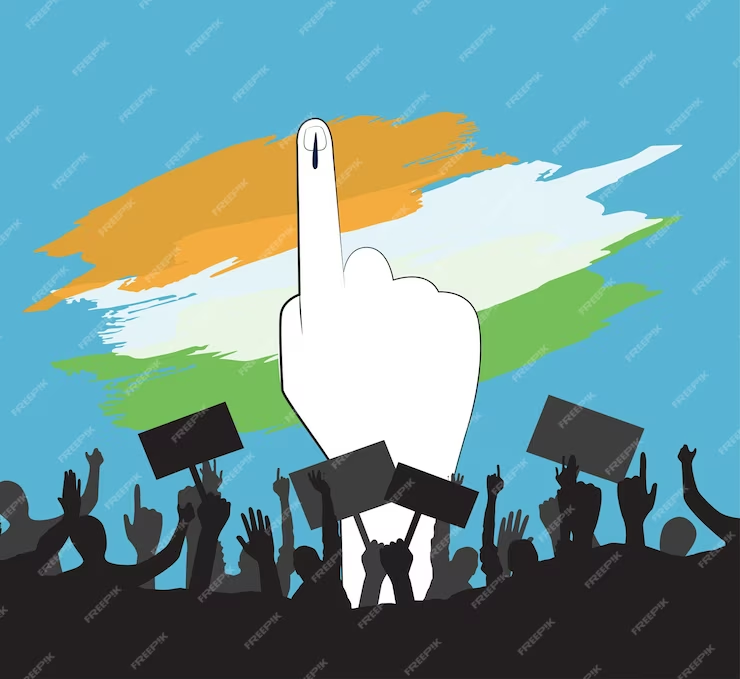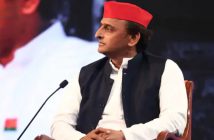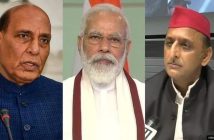FROM BEING tagged as a surprise pick five years ago to becoming the BJP’s obvious choice this time, Yogi Adityanath took oath on Friday evening in Lucknow for a second straight term as Chief Minister of UP before a gathering of around 50,000 people, including Prime Minister Narendra Modi, Union Ministers Amit Shah and Smriti Irani, chief ministers of NDA-ruled states — and former UP Governor Ram Naik, who had administered the oath to Adityanath in 2017.
Apart from Adityanath, the oath of office was administered by Governor Anandiben Patel to Deputy Chief Ministers Keshav Prasad Maurya and Brajesh Pathak, and 50 Ministers: 16 Cabinet Ministers, 14 Ministers of State (independent charge) and 20 Ministers of State.
The new line-up indicated that the BJP has tried to strike a balance of castes, giving prominence to OBCs and SCs, and also regions, from east to west and Bundelkhand to the centre. The number of women on the team remains at five, including former Uttarakhand Governor Baby Rani Maurya as Cabinet Minister.
Some prominent leaders, who were part of the previous government, did not find a place this time. Apart from Dinesh Sharma who made way for Pathak, this list included Cabinet Ministers Srikant Sharma and Sidhatha Nath Singh, who were also the government’s spokespersons, as well as eight-term MLA Satish Mahana. Sixteen from the previous Council of Ministers have found place in the new team.
Among the new faces were A K Sharma, a retired IAS officer from the Gujarat cadre who is seen as “Modi’s man” in UP. After he took voluntary retirement, Sharma was made the party’s state vice president and Legislative Council member. Sharma played a leading role in tackling Covid in the state, particularly in Varanasi and its surrounding areas.
Another new entrant was former IPS officer Asim Arun, who had taken voluntary retirement before the polls after serving as Kanpur Police Commissioner, and won from SP stronghold Kannauj for the first time for his party. Arun hails from the SC Jatav community, and belongs to the same caste as BSP chief Mayawati. Baby Rani Maurya also hails from the Jatav community.
Then, there was Rakesh Sachan, who had recently joined the party after working for SP and Congress in the past. His win from SP-dominated Bhognipur in Kanpur Dehat got him a Cabinet berth. Former Union Minister and ex-Congress leader Jitin Prasada, who had joined the BJP and was inducted in the Cabinet just before the polls, has been given a Cabinet berth in the new government.
In a signal to the party cadre that hard work would be rewarded, BJP state president Swatantra Dev Singh was made a Cabinet Minister.
Former ABVP leader Danish Azad Ansari, who was appointed as general secretary of the party’s minorities cell before the polls, is the only Muslim face in the government. He replaced Mohsin Raza, who was the sole representative of the community in the previous government.
The government has one berth each for alliance partners Apna Dal and Nishad Party: Ashish Patel, husband of Union Minister and Apna Dal leader Anupriya Patel, and Nishad Party chief Sanjay Nishad.
With the Prime Minister in attendance, the oath-taking ceremony was held on a grand scale with cultural and folk artists from different parts of the state greeting the guests, and all roads leading to the Chief Minister’s residence and office decorated with lights and BJP flags.
Apart from all the BJP Chief Ministers, including Shivraj Singh Chouhan of MP and Basavaraj Bommai of Karnataka, JDU chief and Bihar CM Nitish Kumar was also present. However, none of the prominent Opposition leaders were present although they were reportedly invited. Later, SP chief and former UP CM Akhilesh Yadav took a potshot at the event, claiming credit for constructing the stadium.
Later on Friday, Adityanth called the first Cabinet meeting of the new government. Sources described the 90-minute interaction as a “courtesy meeting” to greet the new members. A full-fledged Cabinet meeting has been called for Saturday morning.




